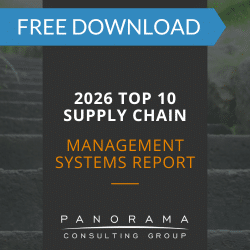If you’re planning an ERP implementation or digital transformation, you’re probably thinking about more compelling topics than software architecture.
To be fair, this is a highly technical topic. Single-tenancy, multi-tenancy . . . who wants to get lost in the weeds?
Nonetheless, we need to talk about it. Your decisions about software architecture will have immediate business implications. This means that even business stakeholders need at least a baseline understanding of tenancy.
Let’s break down single-tenant vs multi-tenant software architecture.
What is Single-Tenancy?
With single-tenancy architecture, one instance of an application (and its supporting infrastructure) only serves one customer. Each customer is known as a “tenant.”
The single-tenant model gives each tenant their own, single database and software instance. This keeps their data separate from other tenants.
While the host provider manages each software instance and its associated infrastructure, each customer has almost full control of the instance, and can customize the software and infrastructure as necessary.
While most single-tenancy software exists on a SaaS server, these architectures are also common in cloud computing. In fact, if tenants use a private cloud service or leverage any kind of third-party cloud offering, the system is usually a single-tenant system.
Benefits to Know
Before you begin an ERP system implementation or another type of enterprise software project, you must define your business goals. Then, consider whether the benefits of single-tenancy support those goals. The benefits include:
- Portability: Provides accessibility (from a cloud service or SaaS server) and the ability to migrate from the host environment as required
- Customization: Allows a high degree of hardware/software customization since all data is separate
- Security: Ensures that data breaches are less likely to affect entire groups, even if tenants all use the same service provider
- Easier Disaster Recovery: Features isolated data backups, making the recovery process faster and easier
While these benefits are compelling, single-tenancy remains one of the lesser-used types of software architecture. The cons listed below might explain why.
Cons to Consider
The potential drawbacks to know before investing in single-tenant architecture include:
- Complex Setup: Usually, tenants set up and manage their own system, which can be time-consuming and complex, especially when it comes to customizing a single-tenant SaaS
- Higher Costs: This architecture can be higher-priced due to longer setup times, extra customizations, and maintenance
- Potential Underutilization: When systems are less optimized, there’s the risk that not all resources will be used
If these negatives outweigh the positives for your organization, you may want to consider multi-tenancy architecture.
The 2026 Top 10 ERP Systems Report
What vendors are you considering for your ERP implementation? This list is a helpful starting point.
What is Multi-Tenancy?
With multi-tenancy architecture, you still have only one instance of a software application. However, this instance serves multiple customers (tenants).
The three main types include:
- Single Application, Single Database: Simplest form and lowest cost — uses one application and database instance to host multiple tenants and store data
- Single Application, Multiple Databases: Uses one application instance and individual databases for each tenant
- Multiple Applications, Multiple Databases: Hosts data in multiple databases, and separates tenants by specific criteria
As with single-tenancy, tenants can customize certain aspects of the application but can’t access or change the code.
Pros and Cons
Considering multi-tenancy architecture? Here are the top benefits:
- Allows you to run applications and store data separately from other tenants
- Delivers scalability in public and private clouds
- Can be less expensive (pay-for-what-you-use and pay-as-you-go pricing models)
- Can increase software ROI
- Can be quicker to maintain and update
There are also some drawbacks to know, such as:
- Provider-delivered apps might be less flexible than others
- Additional virtualization and management can make it more complex
- Requires stricter authentication and access controls for app security
- Response times might be slow if tenants are sharing resources
- One server issue could affect many users and lead to downtime
AI and ML Multi-Tenant Considerations
Increasingly, multi-tenant software solutions are being built around artificial intelligence (AI) and machine learning (ML). These modern AI/ML setups can provide ML capabilities to any number of tenants.
If you’re considering this option, keep the following aspects in mind as you weigh vendor offerings:
- Security (consider tenant-specific vs. shared models or tuned models)
- Scalability
- Performance requirements
- Complexity of implementation
- Associated costs
As you move ahead with this project, you’ll find that there are a few different options to consider. You can use prebuilt AI/ML services, customize the architecture to meet your needs, or integrate AI/ML solutions into your analytics platform.
(Learn about AI in ERP.)
Single-Tenant vs Multi-Tenant Architecture: Which Is Right For You?
In the single-tenant vs multi-tenant debate, there isn’t a clear winner. The right solution for your organization depends on your current needs as well as how you plan to scale and grow in the future.
As you evaluate ERP systems (or CRM systems, SCM systems, etc.), be sure to ask about tenancy options. This is one strategic decision you can’t afford to gloss over in your enterprise software implementation. The type of tenancy you choose will affect your total cost of ownership and impact the software’s ability to scale for future business needs.
Looking for more software selection advice? Contact our ERP consultants below for a free consultation.














